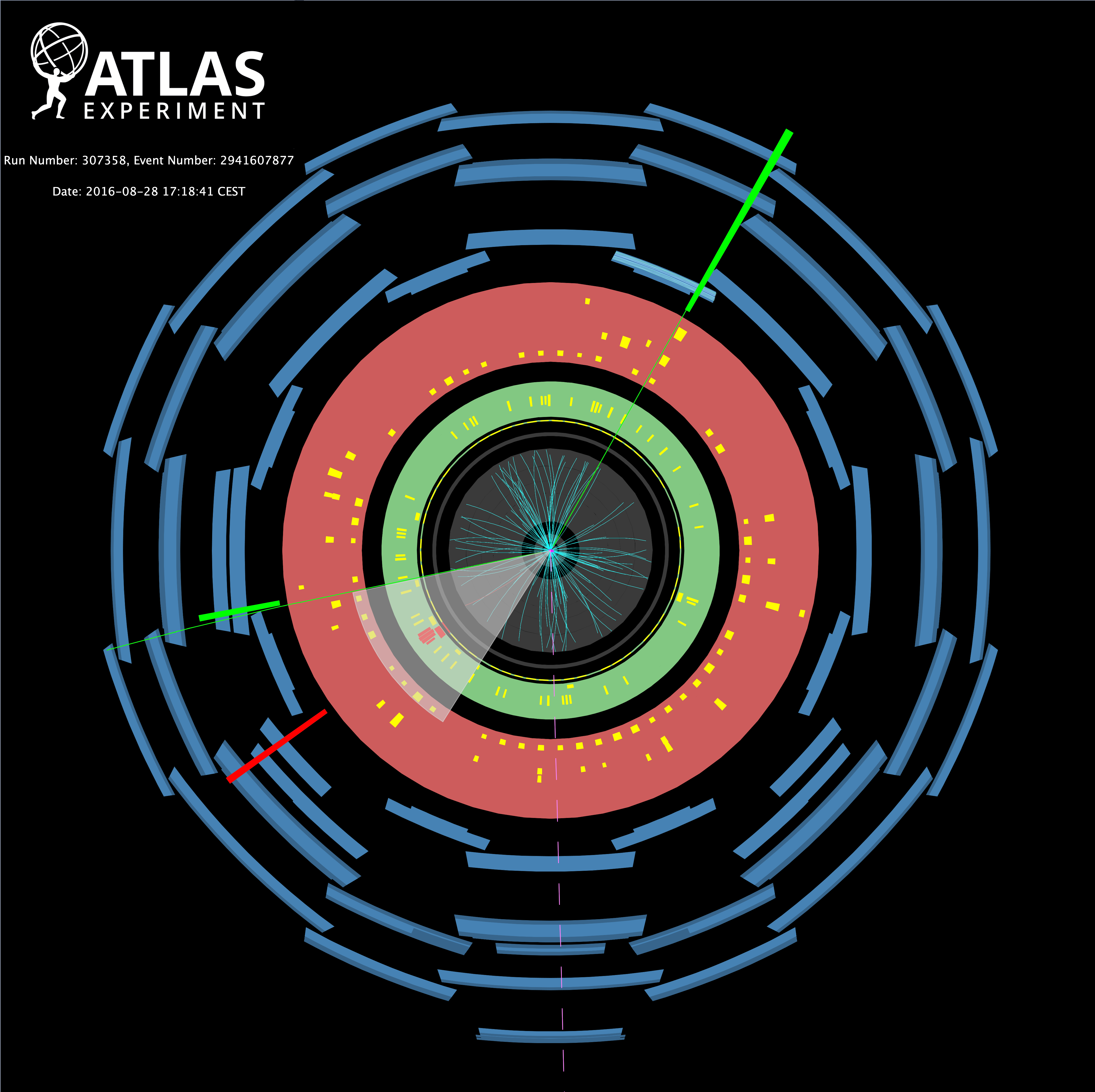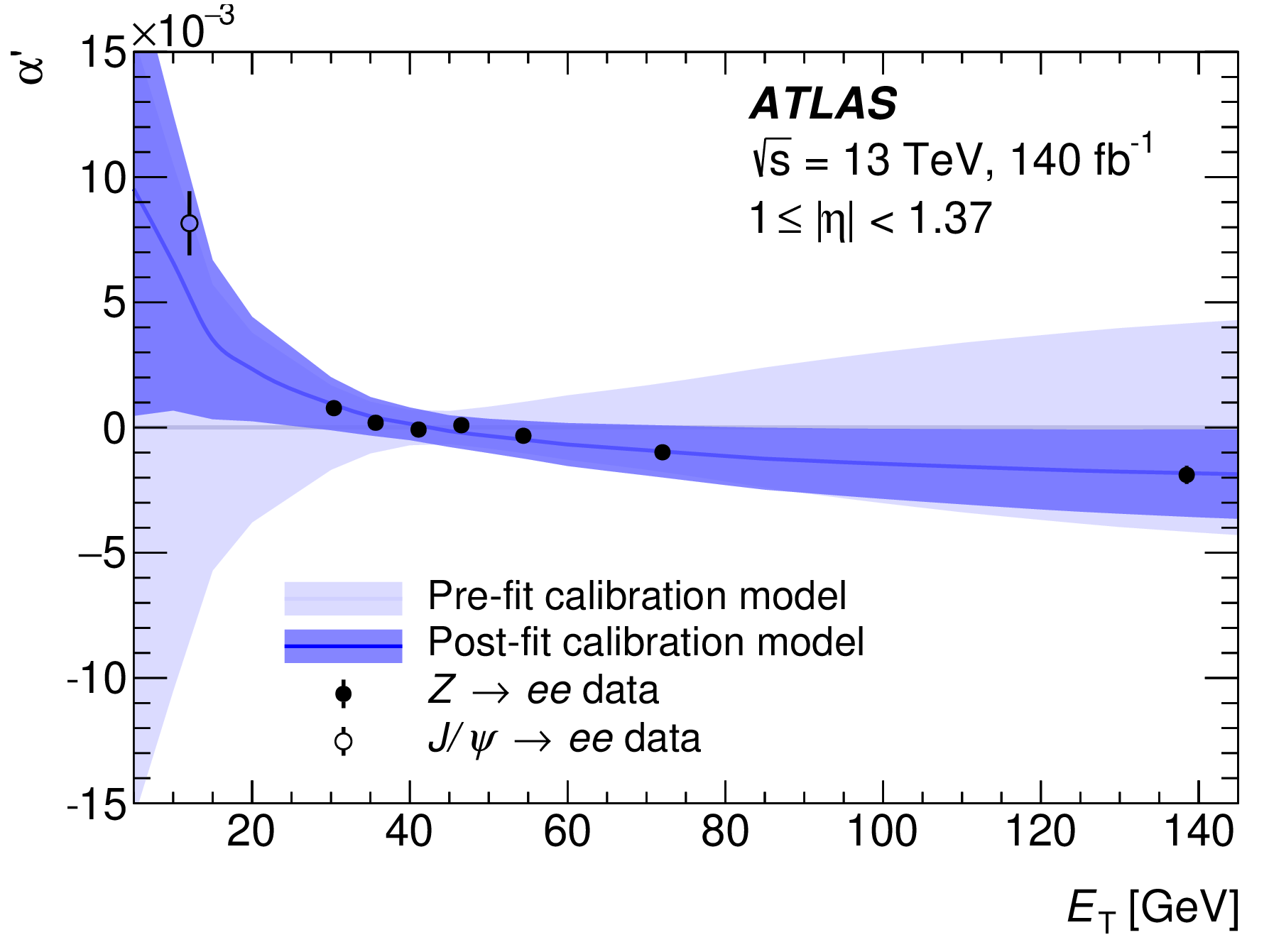ATLAS completes first year at 13 TeV
16 December 2015 | By
As 2015 draws to a close, the ATLAS experiment wraps up its first phase of operation at a record-breaking energy frontier. Though commissioning and preparation were the main objectives, it has also been a great year for data-taking, with 4 fb-1 of collisions recorded by the ATLAS experiment.

The 2015 re-start of the ATLAS experiment has been nothing but exhilarating. Following on the heels of a two-year shutdown, Run 2 of the ATLAS experiment has already seen an intensive commissioning season, high-level data-taking and successful operation at 13 TeV. "The detector, trigger, data preparation, and computing and software systems have performed very well indeed," says Dave Charlton, ATLAS spokesperson. "This is thanks to the dedication of so many over Long Shutdown 1, and thanks to the support of the ATLAS Operations team during data-taking."
Run 2 has seen ATLAS operation under diverse conditions. Following the declaration of Stable Beams at 13 TeV, the machine slowly began to ramp-up in intensity. This was done in two steps, starting in June with beams with 50 nanoseconds (ns) spacing. In August, the machine then switched to 25 ns spacing; this was the first time ATLAS has recorded significant physics data with the final LHC bunch spacing.

The experiment also had two exceptional runs devoted to forward physics, using the specialLHCf and ATLAS/ALFA detectors that look at slight deflections between colliding protons. These short-but-sweet runs went very smoothly, giving the analysis teams plenty of data to work with while they await the next data-taking period.
ATLAS ended the year with a three-week heavy-ion run, gathering almost 700 μb-1 of data. The total centre-of-mass energy in these collisions reached 1045 TeV, breaking the symbolic 1 PeV (Peta-electronvolt) barrier. ATLAS has maintained an average data-taking efficiency of 93% and brought that number up to 97% during the heavy-ion run.
"This year we have focused on getting all our ducks in a row, preparing for the challenges that lie ahead," says Alex Cerri, ATLAS Run Coordinator. "Next year the Operations team will focus on maintaining smooth operation of the experiment, gathering as much data as possible at this high-intensity, high-energy frontier."

2015 has also been rich with physics results. ATLAS' first 13 TeV results were presented at the EPS-HEP conference, only two months after Stable Beams were declared. In September, at the Large Hadron Collider Physics conference (LHCP2015), the ATLAS and CMS collaborations presented the most precise measurements yet of Higgs boson properties. By combining Run 1 data from both experiments, the new measurements paint a clear picture of how the Higgs boson is produced, decays, and interacts with other particles. The next month, ATLAS submitted its first paper using 13 TeV data to Physical Review Letters. This result provided further insight to the origin of the "ridge" seen in proton-proton collisions.
On 15 December, the ATLAS collaboration presented its end-of-year results at a joint session with the CMS experiment. A total of 28 results were presented using the 2015 full data sample, with four of these results already submitted for publication. With the many ATLAS analyses, several modest deviations from the expectations of the Standard Model were observed as one would expect. These include excesses with a significance of about 2 sigma in the search for a hypothetical new resonance that decays into a pair of gamma rays, and in the search for supersymmetry in the channel with jets, a Z-boson and missing energy. While tantalizing, the 2 sigma significance is far short of that needed for a discovery, but strongly motivates ATLAS to be ready for 2016 data-taking.
Next year, ATLAS' broad physics programme will continue to probe the physical laws governing the Universe. "2016 will see the LHC become a production machine, delivering tens of fb-1 per year," concludes Dave Charlton. "We're looking forward to recording and analyzing this new data, as we continue to reach for new physics beyond Run 1."
ATLAS results from 2015 data-taking can be seen at: https://twiki.cern.ch/twiki/bin/view/AtlasPublic/December2015-13TeV



